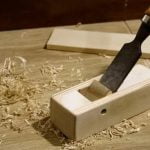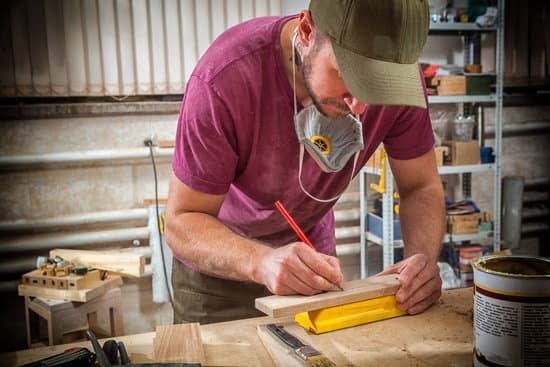Can you do woodwork on a metal lathe? The concept of using a metal lathe for woodworking may seem unconventional, but it is indeed possible. This article will delve into the fascinating world of woodwork on a metal lathe, exploring the techniques, tools, safety precautions, and the benefits and drawbacks of utilizing a metal lathe for woodworking projects.
Woodwork on a metal lathe involves using a metalworking machine typically used for shaping and cutting metal to instead work with wood. This unique approach opens up new possibilities for creating intricate wood designs and turning wooden pieces with precision. While it may seem unconventional to some, woodworkers have been successfully using metal lathes to create beautiful wooden artworks.
Understanding the differences between a traditional wood lathe and a metal lathe is crucial in mastering woodwork on a metal lathe. From safety precautions to specific tools and equipment needed, there are several key factors that differentiate the two types of lathes and require careful consideration when venturing into woodwork on a metal lathe.
Understanding the Differences
Woodworking on a metal lathe involves using the same equipment and tools as for metalworking, but it demands some significant differences in approach and technique. One of the most important considerations is the speed at which the lathe operates. While metal lathes can spin at extremely high speeds, wood lathes generally operate at lower speeds. The high speeds of a metal lathe can result in dangerous situations when working with wood.
Another key difference lies in the material being worked on. Metal lathes are designed to handle hard, dense materials like steel or aluminum, whereas wood lathes are optimized for softer, lighter woods. This means that different cutting tools and techniques need to be employed when doing woodwork on a metal lathe.
Additionally, while a metal lathe typically uses coolant to prevent overheating during metalwork, this is not necessary nor recommended when doing woodwork. The natural lubricants in wood combined with high-speed friction can generate enough heat to cause a fire if there’s oil or other flammable liquids present.
Overall, it’s important to understand these differences and adapt your approach accordingly when considering whether or not it’s possible to do woodwork on a metal lathe.
| Wood Lathe | Metal Lathe |
|---|---|
| Optimized for softer and lighter woods | Designed to handle hard, dense materials like steel or aluminum |
| Operates at lower speeds | Spins at extremely high speeds |
| Does not require coolant | Uses coolant during operation |
Safety Precautions
Woodworking on a metal lathe can be an intriguing and challenging endeavor, but it also requires extreme caution and adherence to safety measures. When working with wood on a metal lathe, it is essential to take thorough precautions to avoid any accidents or injuries. Unlike the smooth and consistent properties of metal, wood can be unpredictable and may have varying textures, grain patterns, and moisture content.
One of the most crucial safety precautions when doing woodwork on a metal lathe is wearing appropriate personal protective equipment (PPE), including safety goggles, ear protection, and a dust mask. These items are essential for safeguarding your eyes, ears, and respiratory system from potential hazards such as flying wood chips, splinters, and fine wood dust. Additionally, loose-fitting clothing, jewelry, or long hair should be secured or removed to prevent entanglement with the spinning wood piece.
Another important safety measure is understanding the limitations of the metal lathe when used for woodworking. The design of a metal lathe is meant for shaping and cutting metal materials with specific cutting tools designed for those materials.
Therefore, modifications may need to be made to account for the differences in working with wood instead of metal. This includes ensuring that the lathe’s speed is appropriate for woodworking, as high speeds designed for metalwork can lead to dangerous situations when applied to wood.
Lastly, maintaining a clean and organized work environment is essential for safety when using a metal lathe for woodworking. A clutter-free workspace can help prevent accidents caused by tripping over tools or materials while operating the lathe. Proper tool placement and storage not only contributes to safety but also facilitates efficiency during the woodworking process.
Tools and Equipment
Woodworking on a metal lathe requires specialized tools and equipment to ensure safety and precision in the woodturning process. While some tools used in metal lathe work can be utilized for woodwork, there are unique tools and accessories specifically designed for woodturning on a metal lathe. Here are some essential tools and equipment needed for woodwork on a metal lathe:
- Wood Lathe Chuck: A wood lathe chuck is essential for securely holding the wooden workpiece in place while it is being turned on the metal lathe. It provides stability and allows for smooth rotation of the wood.
- Woodturning Tools: Unlike metalworking tools, specific woodturning tools such as gouges, chisels, and scrapers are used to shape, cut, and refine the wooden material during the turning process. These tools are specially designed to handle the softer nature of wood compared to metal.
- Faceplate: A faceplate is used to mount larger or irregularly shaped wooden blanks onto the metal lathe. It provides a stable base for turning operations and allows for versatility in woodworking projects.
- Safety Equipment: Just like in metal lathe work, safety goggles, gloves, and dust masks are necessary when working with a metal lathe for woodwork. Woodturning on a metal lathe can produce flying debris and fine dust particles that require proper protection.
In addition to these specific tools and equipment, it is also important to consider the type of wood being used for turning on a metal lathe. Different types of woods have unique characteristics that can impact the turning process, so it is important to select suitable materials that align with the capabilities of the metal lathe.
Moreover, while many traditional woodworking accessories can be adapted for use with a metal lathe, caution must be exercised as certain modifications can potentially compromise safety and functionality. Therefore, investing in purpose-built tools and equipment designed specifically for woodturning on a metal lathe is highly recommended to ensure optimal results without compromising safety or quality.
Can you do woodwork on a metal lathe? The answer is yes; however, it requires careful consideration of the appropriate tools and equipment to achieve successful outcomes in woodworking projects using a metal lathe.
Techniques for Woodwork
Woodwork on a metal lathe may seem unconventional, but it is indeed possible to create beautiful and intricate wood pieces using this tool. In this section, we will provide you with step-by-step instructions on how to effectively do woodwork on a metal lathe.
When it comes to using a metal lathe for woodwork, there are some key differences in techniques compared to traditional woodworking tools. The first step is to ensure that the lathe is properly set up for woodwork. This includes adjusting the speed and ensuring that the tool rest and tailstock are securely in place. Unlike metalworking, where cutting oils are often used, woodwork on a metal lathe does not require lubrication.
Once the lathe is properly set up, the next step is to prepare the workpiece. Securely mount the piece of wood onto the lathe using a chuck or faceplate. It’s important to use sharp woodworking tools designed specifically for use on a metal lathe. Traditional turning chisels can be used, but they should be able to handle the higher speeds typically used for metalworking. As with any woodworking project, safety goggles and other protective gear should always be worn.
Another crucial aspect of woodwork on a metal lathe is selecting the appropriate cutting speed and feed rate based on the specific type of wood being worked on. Different woods have different hardness levels, so adjusting these settings accordingly will ensure cleaner cuts and better results.
| Key Considerations | Techniques |
|---|---|
| Proper setup | Adjusting speed and setting up tool rest |
| Workpiece preparation | Securing wood onto a chuck or faceplate |
| Safety precautions | Wearing protective gear and using sharp woodworking tools |
Benefits and Drawbacks
Woodwork on a metal lathe has been gaining popularity among woodworking enthusiasts, as it opens up new possibilities for creating unique and intricate wood pieces. However, there are both advantages and limitations to using a metal lathe for woodwork. Understanding these can help individuals decide whether this method is suitable for their woodworking needs.
Advantages of Using a Metal Lathe for Woodwork
One of the main advantages of using a metal lathe for woodwork is its versatility. Metal lathes are designed to handle various materials, including wood, which allows woodworkers to experiment with different techniques and designs. Additionally, metal lathes are known for their precision and accuracy, making it possible to create detailed and finely crafted wood pieces.
Another benefit is the availability of accessories and attachments that can enhance the capabilities of a metal lathe for woodwork. From tool rests to indexing systems, these add-ons can improve efficiency and expand the range of projects that can be accomplished on a metal lathe.
Limitations of Using a Metal Lathe for Woodwork
While there are advantages to using a metal lathe for woodwork, there are also some limitations to consider. One significant drawback is the speed range of most metal lathes, which may not be ideal for certain types of woodworking tasks. Woodturning often requires higher speeds compared to metalworking, so woodturners might find themselves limited in this aspect when using a metal lathe.
Additionally, the size and weight of typical metal lathes can pose challenges when working with larger or heavier wood pieces. Maneuvering and securing such pieces on a metal lathe may require additional effort and care to ensure safety and proper execution.
Overall, understanding the benefits and limitations
Examples and Inspirations
Woodwork on a metal lathe may seem unconventional, but it opens up a world of possibilities for creating unique and intricate wood projects. In this section, we will explore real-life examples of woodwork projects that have been successfully created on a metal lathe, showcasing the creativity and ingenuity of artisans who have embraced this unconventional approach.
Turning Wooden Bowls
One of the most common woodwork projects created on a metal lathe is the turning of wooden bowls. Using a metal lathe allows for precise shaping and carving of the wood, resulting in beautifully crafted bowls with smooth curves and impeccable finish. Artisans can experiment with different types of wood to create bowls of various shapes, sizes, and designs, adding a touch of elegance to any kitchen or dining table.
Wooden Pens and Pencils
Another popular woodwork project on a metal lathe is the creation of wooden pens and pencils. With the ability to turn small pieces of wood with precision, artisans
Wooden Goblets and Goblet Sets
Using a metal lathe for woodwork also enables artisans to craft exquisite wooden goblets and goblet sets. The ability to turn wood into delicate, curved shapes produces stunning goblets that are as visually appealing as they are functional. Whether used for special occasions or displayed as decorative pieces, wooden goblets created on a metal lathe showcase the versatility and craftsmanship achievable through this unconventional method.
These examples demonstrate that woodwork on a metal lathe is not only possible but also yields impressive results. By showcasing these real-life examples, artisans are continually pushing the boundaries of woodworking techniques, embracing innovation in their craft.
Tips and Tricks
Woodwork on a metal lathe can be a unique and fulfilling experience for those who want to explore different possibilities in woodworking. While it may seem unconventional, using a metal lathe for woodwork opens up new creative opportunities and allows for the creation of intricate designs that may not be achievable with traditional woodworking tools.
When considering woodwork on a metal lathe, it is important to understand the key differences between working with wood and working with metal. Unlike metal, wood has grain patterns and varying densities that require different cutting techniques. Additionally, safety precautions must be taken into account when using a metal lathe for woodwork, as wood chips and splinters can pose different hazards than metal shavings.
To ensure a successful woodwork project on a metal lathe, specific tools and equipment are needed. Some essential items include:
- Lathe chuck specifically designed for wood
- Sharp turning tools suitable for cutting wood
- Workholding accessories such as faceplates or chucks designed for woodturning
- Dust collection system to manage wood chips and dust
In order to achieve the best results when doing woodwork on a metal lathe, it is crucial to follow specific techniques tailored for this process. These techniques include:
- Using lower lathe speeds suitable for woodworking
- Taking lighter passes when cutting wood
- Using sandpaper or other finishing techniques appropriate for wood
Overall, while there are certain benefits to using a metal lathe for woodwork, such as the ability to create detailed designs and shapes, there are also limitations to consider. It is important to weigh these factors carefully before embarking on a woodturning project with a metal lathe.
Additionally, learning from real-life examples of successful woodturning projects created on a metal lathe can serve as inspiration and provide valuable insights into the possibilities of this unconventional technique in woodworking.
Ultimately, expert tips and tricks can help ensure success in woodturning on a metal lathe. By leveraging the expertise of experienced professionals in this field, individuals can overcome challenges and achieve exceptional results in their own woodworking endeavors using a metal lathe.
Conclusion
In conclusion, woodwork on a metal lathe is indeed possible and can yield impressive results with the right tools, techniques, and precautions. While there are key differences between wood and metal lathes, understanding these variations can help in adapting the use of a metal lathe for woodwork. By taking safety precautions seriously and investing in the specific tools and equipment required for woodwork on a metal lathe, enthusiasts can embark on creative projects with confidence.
It is important to note that while using a metal lathe for woodwork has its benefits such as precision and durability, there are also limitations to consider. However, with proper knowledge and skill, woodworking enthusiasts can certainly utilize a metal lathe to craft unique pieces that showcase the versatility of this machinery. The examples and inspirations shared in this article provide a glimpse into what can be achieved through woodwork on a metal lathe when approached with creativity and expertise.
Ultimately, as showcased throughout this exploration of woodwork on a metal lathe, it is clear that with the right approach and understanding of the specific techniques needed, individuals can indeed embrace the feasibility of using a metal lathe for wood projects. By following expert tips and tricks, enthusiasts
Frequently Asked Questions
What Cannot Be Done on a Lathe?
While lathes are incredibly versatile machines, there are certain things that cannot be done on a lathe. For example, milling operations, which require a different type of machine and tooling, cannot be performed on a lathe.
Can You Turn Wood on a Lathe?
Yes, wood can definitely be turned on a lathe. In fact, woodturning is one of the most common and popular uses for a lathe. From creating decorative spindles to crafting bowls and vases, woodturning on a lathe offers endless possibilities for woodworking enthusiasts.
What Can I Use a Metal Lathe For?
A metal lathe is primarily used for shaping and cutting metal workpieces. Whether it’s threading bolts, turning down shafts, or facing the ends of a metal bar, a metal lathe is essential for creating precision metal parts in various industries such as automotive, aerospace, and manufacturing.

Hi everyone! I’m a woodworker and blogger, and this is my woodworking blog. In my blog, I share tips and tricks for woodworkers of all skill levels, as well as project ideas that you can try yourself.





